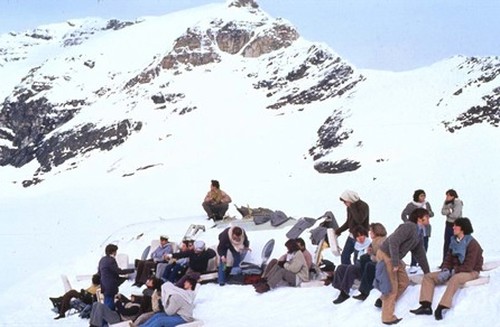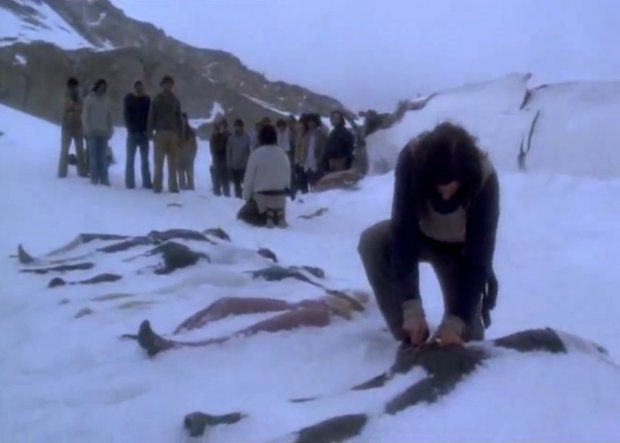In 1972, an Uruguayan chartered flight carrying 45 people, which included a rugby union team, their family and friends, crashed in the Andes mountains. 27 people survived the crash and sought shelter in the wreckage of the flight. However, an avalanche, and injuries as well as the cold took many lives, and only 16 people survived the incident. Stranded in the Andes mountains, they battled the harsh elements, and had little food and no fuel. They ultimately had to resort to eating the dead. Two members from the group undertook a gruelling 10 day trek across the mountainous landscape, and were finally found by a Chilean arriero. The rest of the survivors were then rescued. A film was made on this incident in 1993, titled ‘Alive’.

While the tale of this incident is thrilling and inspiring, it is also interesting in terms of the interactions the group had, cut off from the rest of the world. We can examine the film and find Organisational Behaviour and Group dynamics in action.
Group Structure and Roles
Role differentiation is the process in which there is an increase in the number of roles in a group, which is accompanied by a gradual decrease in the scope of these roles, as each one becomes more narrowly defined and specialized. We can see this happen in the case of the Andes survivors. While at the outset, all are simply members of the group, the ‘survivors’, but as time passes, they all don the mantel of new, specialized roles – the leader, the doctor, the explorer, the inventor etc. Before the avalanche that kills many of the group members, initially the group structure is based on the rugby team’s seniority and structure. Later, it evolves as a hierarchical structure based on kinship.
![Alive_1993_Riddl3r_P2PDL[21-34-09]](https://backend.insideiim.com/wp-content/uploads/2016/09/Alive_1993_Riddl3r_P2PDL21-34-09.jpg)
We can also examine the team roles through Belbin’s team roles. The inventory is designed to identify the role a member might play in a team. However, a member might not always conform to all the characteristics given for a single role. Nando is a Shaper. He thinks out of the box (ahem-eating-dead-people-ahem), challenges the norms (yes, the same thing again). Also, he is insistent about going to find a way out of the mountains. On the other hand, Antonio first emerges at the Coordinator. However, his sun sets soon, and Nando takes centre stage. Canessa is a Plant. He figures out that the seat covers can be used as blankets to keep warm. Roy, meanwhile, is a classic implementer. He is always by the side of Antonio, Canessa, or Nando, ready to translate their strategies into action.
Group norms
Norms are standards that regulate the group’s behaviour. They are emergent, because they are developed through the interaction between members, and they are also consensual, because they are accepted by the majority.

Consider cannibalism. In any society, it is a taboo. It is not accepted, it might even be illegal in some societies. However, when the starvation begins, some people in the group suggest consuming corpses to stay alive. Another group protests, unable to think of their dead friends as sources of sustenance. However, when they learn that the search for the plane has been called off, they succumb to hunger and eat. Hence cannibalism evolves through the interaction of members, and is consensual because everyone accepts it.
Note:
This film was assigned to my class for Organisational Behaviour II course, by Dr. Sasmita Palo, Faculty, Tata Institute of Social Sciences, Mumbai. This is not entirely an unorthodox manner to teach especially in TISS. It allows you to think critically, encourages reflection, and ensures that the terms you learn in the OB textbook don’t just remain there.
-------------
About the Author:

Pooja Wanpal considers reading the sole aim of her life. She is obsessed with trekking, pani puri, and adores traveling. She is a freelance content writer, and has penned the novel, ‘Love and Lokpal’. She is currently studying Human Resource Management and Labour Relations at Tata Institute of Social Sciences, Mumbai. She is also a part of the InsideIIM Student Team 2016-17.
